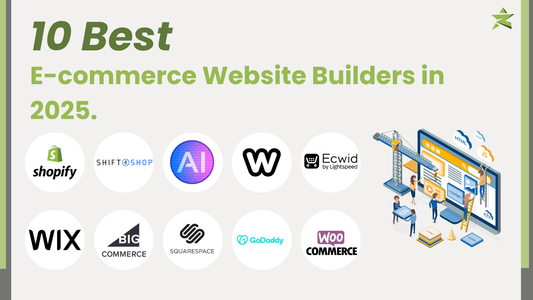In 2022, retail eCommerce revenues from apparel and accessories in the U.S. hit a staggering $180.5 billion, with projections suggesting growth to $295.7 billion by 2025, according to Statista. This explosive growth is driven by digital channels, increased mobile access, and innovative technologies. For aspiring entrepreneurs with a flair for fashion, the online fashion industry presents a wealth of opportunities. This guide will navigate you through the essential steps to establish your own online clothing store and unlock its full potential.
The Shift: Selling Clothes Online vs. Offline
Despite the enduring presence of brick-and-mortar stores, online apparel sales now represent 46% of total U.S. apparel sales. Let’s explore some significant advantages of selling online compared to traditional retail:
1. Lower Barriers to Entry
Setting up an online store can take just days, while establishing a physical storefront is often a lengthy process requiring substantial investment.
2. Reduced Overhead Costs
Opening a physical shop can cost between $50,000 to $150,000, while online models generally require far less capital.
3. Convenience for Shoppers
Customers appreciate the flexibility of shopping anytime, anywhere, eliminating the need for travel.
4. Omnichannel Marketing Opportunities
Connecting online and offline channels can enhance customer experiences and potentially increase revenue by 33%.
Steps to Start Your Online Clothing Store
1. Identify Your Clothing Niche
Rather than catering to everyone, narrow your focus to a specific market segment based on your interests and business objectives. Consider these factors:
- Uniqueness: Ensure your brand stands out in a crowded market.
- Passion: Select a niche that resonates with you, whether it’s sustainable fashion or plus-size clothing.
- Value Addition: Identify gaps in the market where you can contribute meaningfully.
- Profitability: Choose a niche with the potential for financial success.
2. Develop Your Business Plan
A solid business plan is critical for guiding your venture. It should include:
- Executive Summary: A concise overview of your goals.
- Company Description: Details about your product lines and target demographics.
- Market Analysis: Data on industry trends, competitors, and potential growth.
- Competitive Analysis: An assessment of competitors in your niche.
- Marketing Plan: Strategies for reaching your audience both online and offline.
- Financial Projections: Short-term and long-term financial outlooks.
3. Choose Your Business Model
In the online clothing retail space, consider these common models:
- Print-on-Demand: Customize existing items based on customer orders, ideal for those with limited retail experience.
- Custom Cut and Sew: Design and produce your own clothing, requiring a larger investment and more design expertise.
- Private Label Clothing: Partner with manufacturers to sell branded products.
- Dropshipping: Act as an intermediary, minimizing upfront costs by not holding inventory.
4. Select an eCommerce Platform
Your choice of eCommerce platform will shape your online store’s functionality. Key questions to consider:
- What level of technical expertise do I have?
- What features do I require?
- What is my budget?
Platforms like Boost Star Experts offer the flexibility of Open SaaS, providing a balance between customization and ease of use.
5. Choose a Domain Name
Your domain name should reflect your brand identity and be easy to remember. Follow these tips:
- Simplicity: Avoid complex or hard-to-spell names.
- Scalability: Choose a name that allows for future growth.
- Uniqueness: Ensure it distinguishes your brand from competitors.
6. Customize Your Store with Templates
Most eCommerce platforms offer templates that facilitate easy customization. Opt for themes that align with your brand’s vision and aesthetic.
7. List Your Products Effectively
Quality product listings can significantly influence sales. Focus on:
- Descriptive Content: Craft engaging product descriptions that highlight benefits.
- High-Quality Images: Showcase products from multiple angles and in real-life contexts.
- User-Friendly Navigation: Ensure your site is easy to navigate to enhance customer experience.
- Efficient Checkout Process: Simplify the checkout to reduce cart abandonment, accepting various payment methods.
Launch and Market Your Store
Now that your store is set up, it’s time to attract customers:
1. Utilize Email Marketing
Leverage email campaigns to engage customers and promote offers. With an average ROI of $42 for every dollar spent, email marketing is a cost-effective strategy.
2. Embrace Social Media Marketing
Use social platforms to build brand awareness and connect with your audience. Create engaging content and leverage influencer partnerships to expand your reach.
3. Explore Paid Advertising
Consider targeted online ads to drive traffic to your store, using platforms like Google Ads and social media to reach your target demographic effectively.
Conclusion
Entering the online fashion market presents exciting opportunities for both startups and established businesses. By understanding the landscape and following these strategic steps, you can establish a successful online clothing store that not only meets customer needs but also thrives in a competitive environment.
With the right planning and execution, your venture into eCommerce can transform your passion for fashion into a thriving business. Embrace the potential of digital retail today, and watch your online clothing store flourish!










